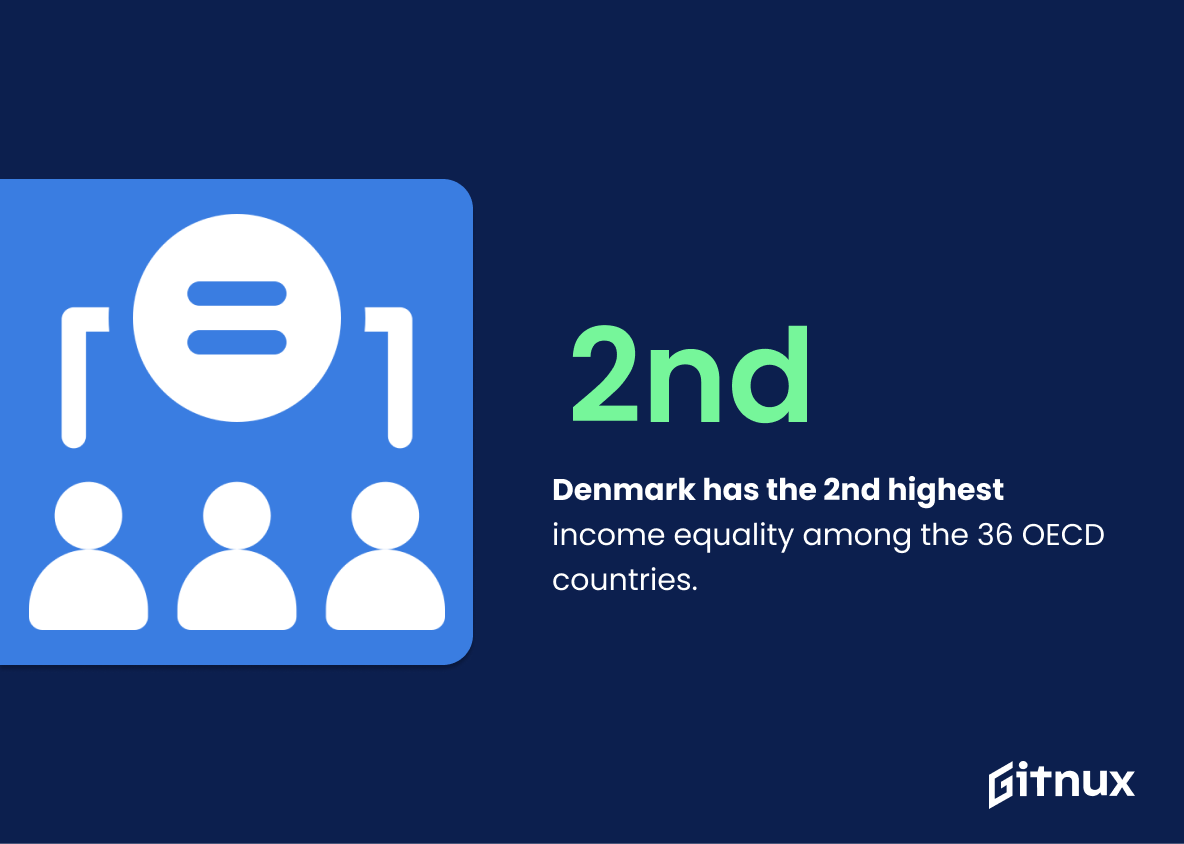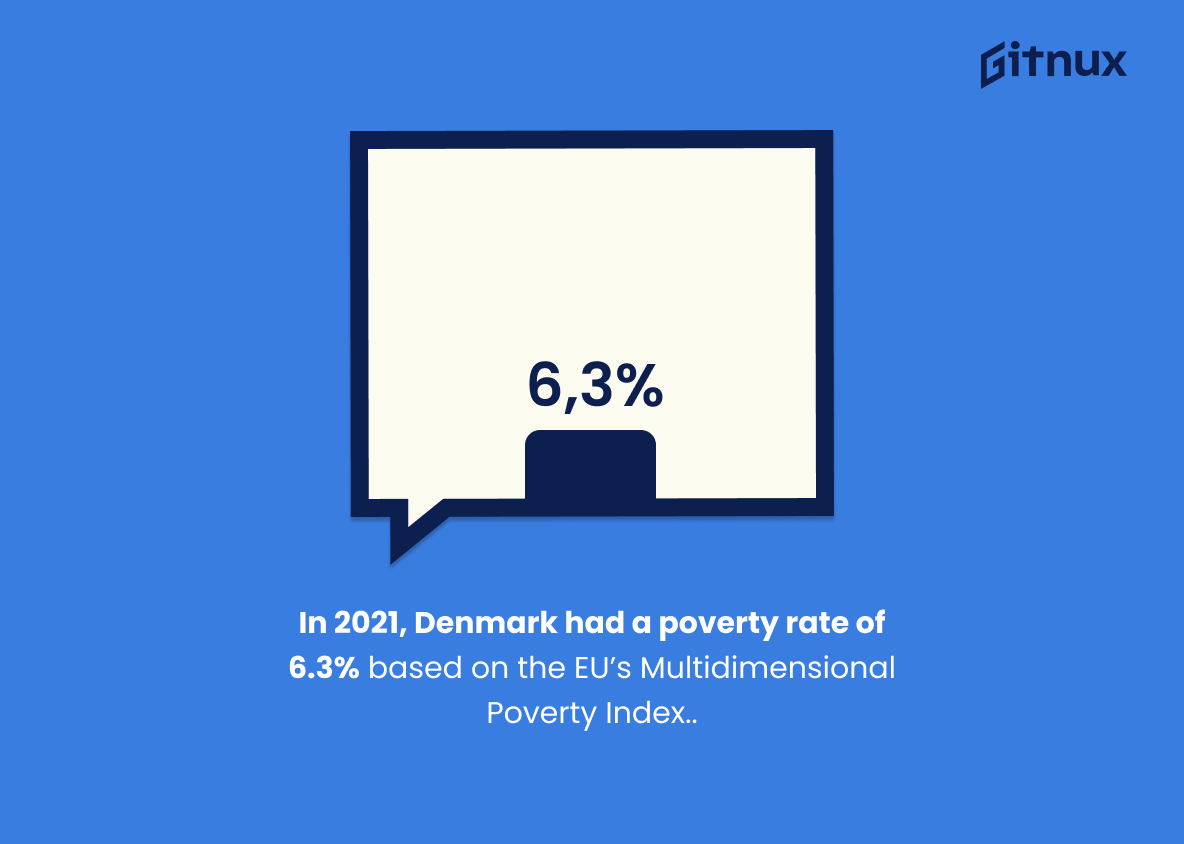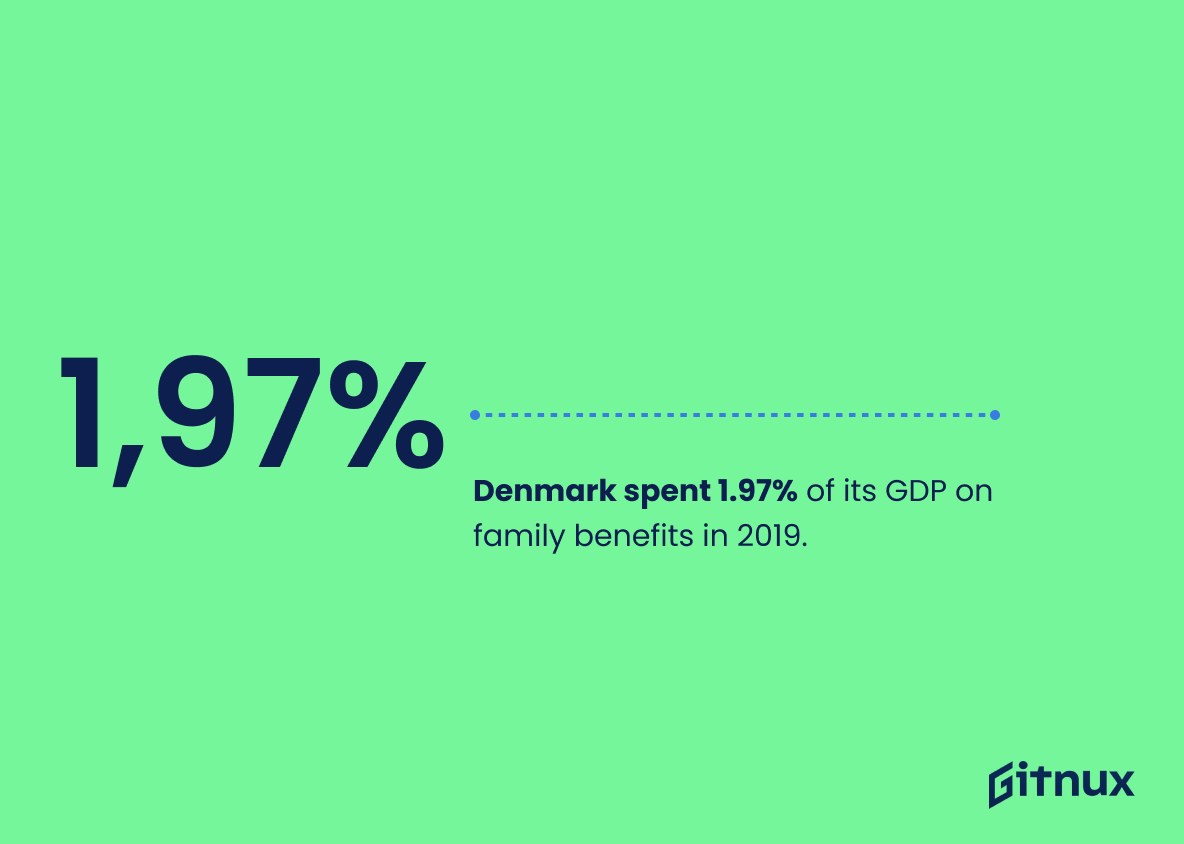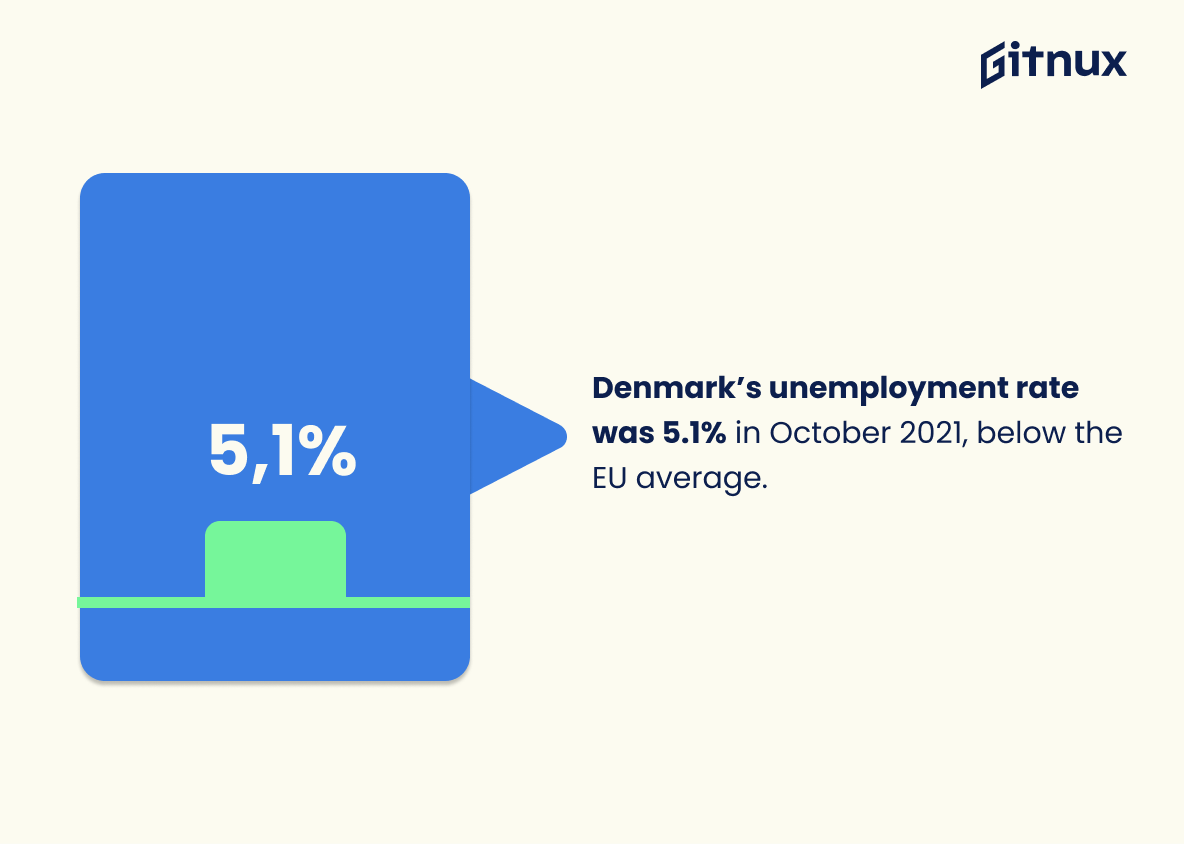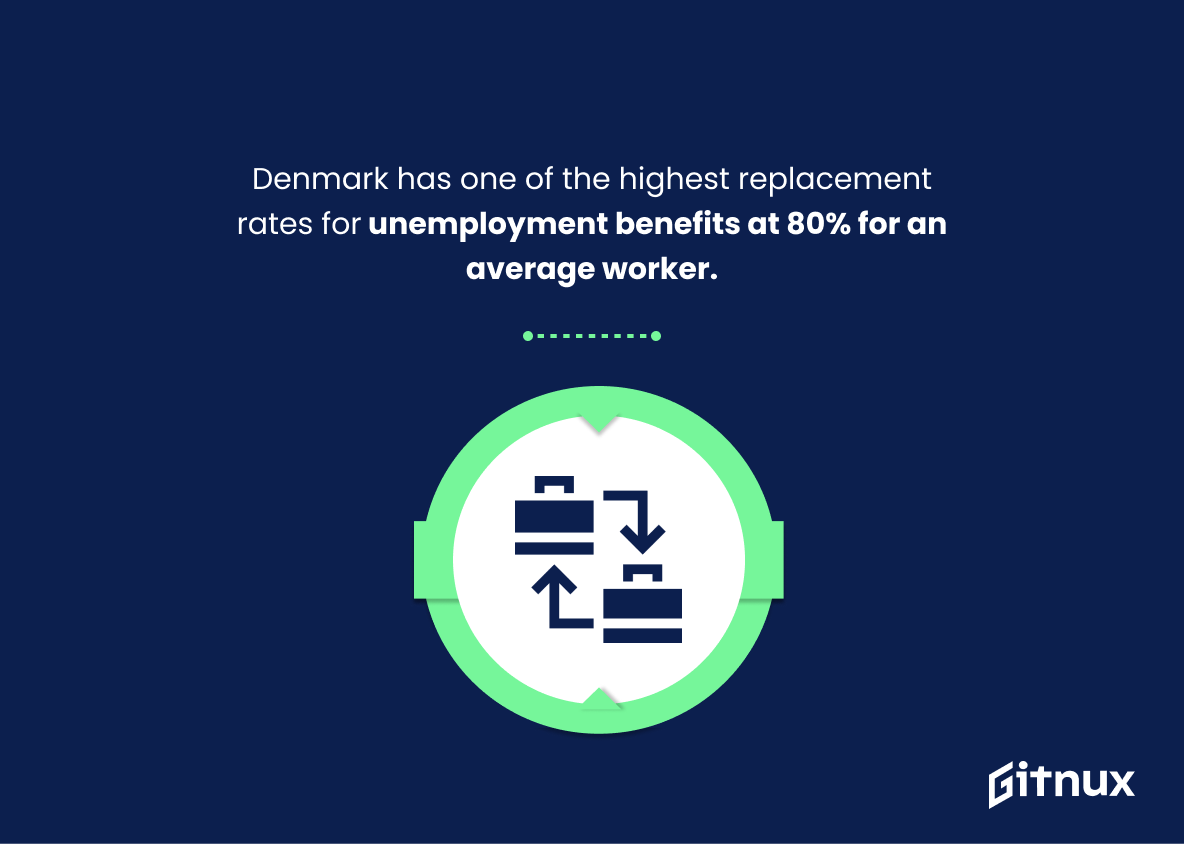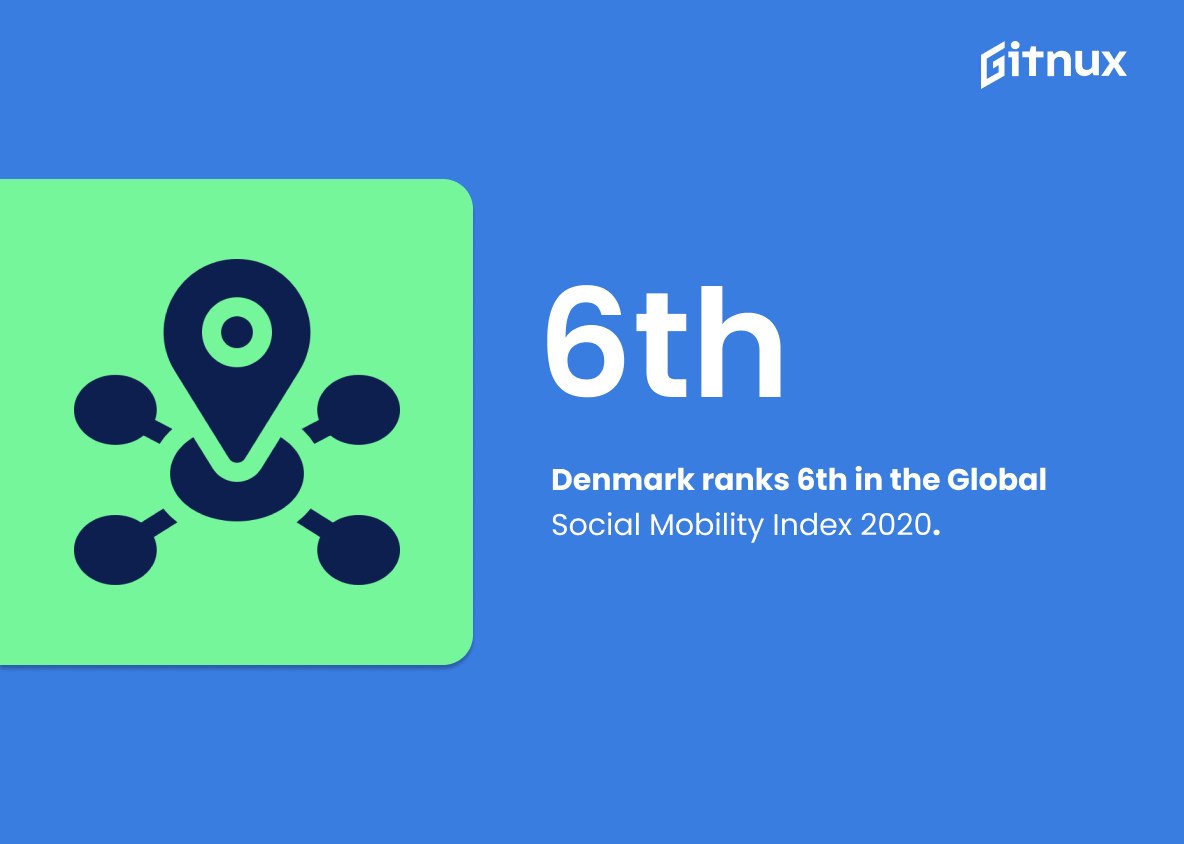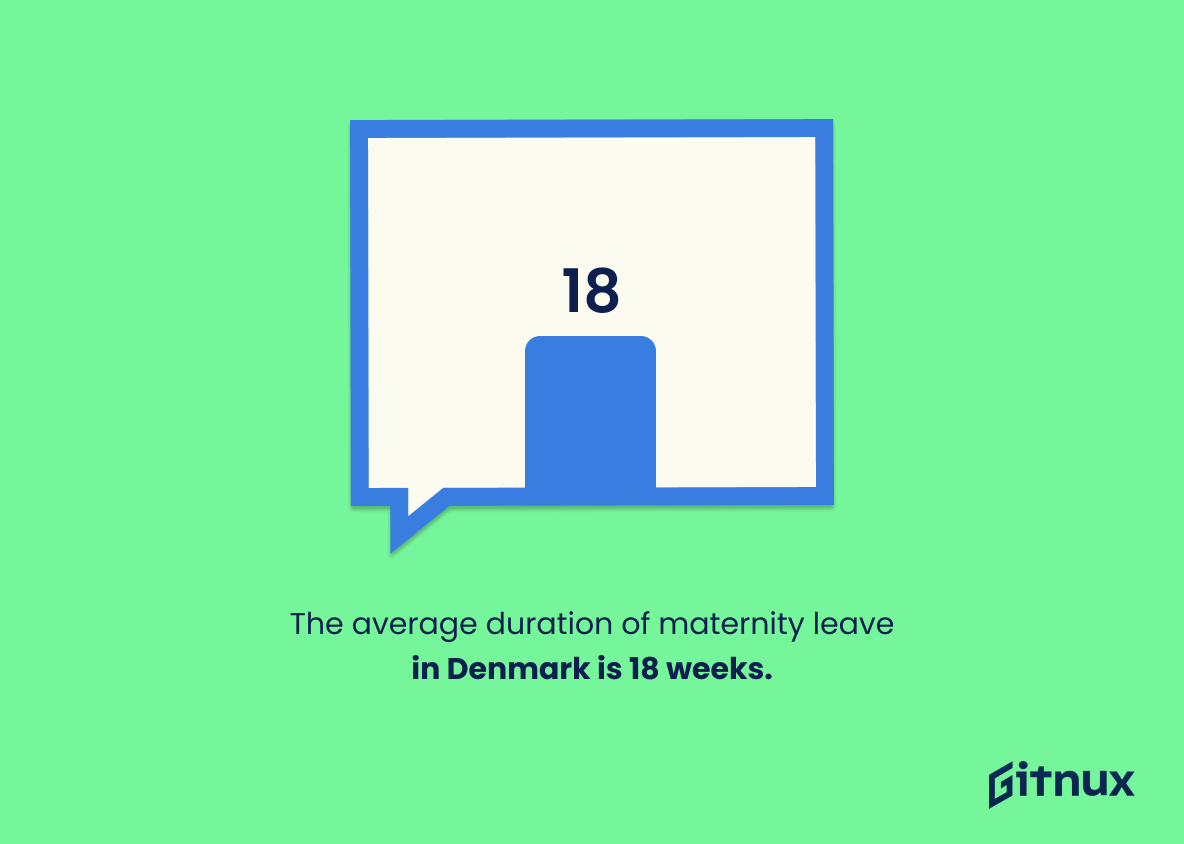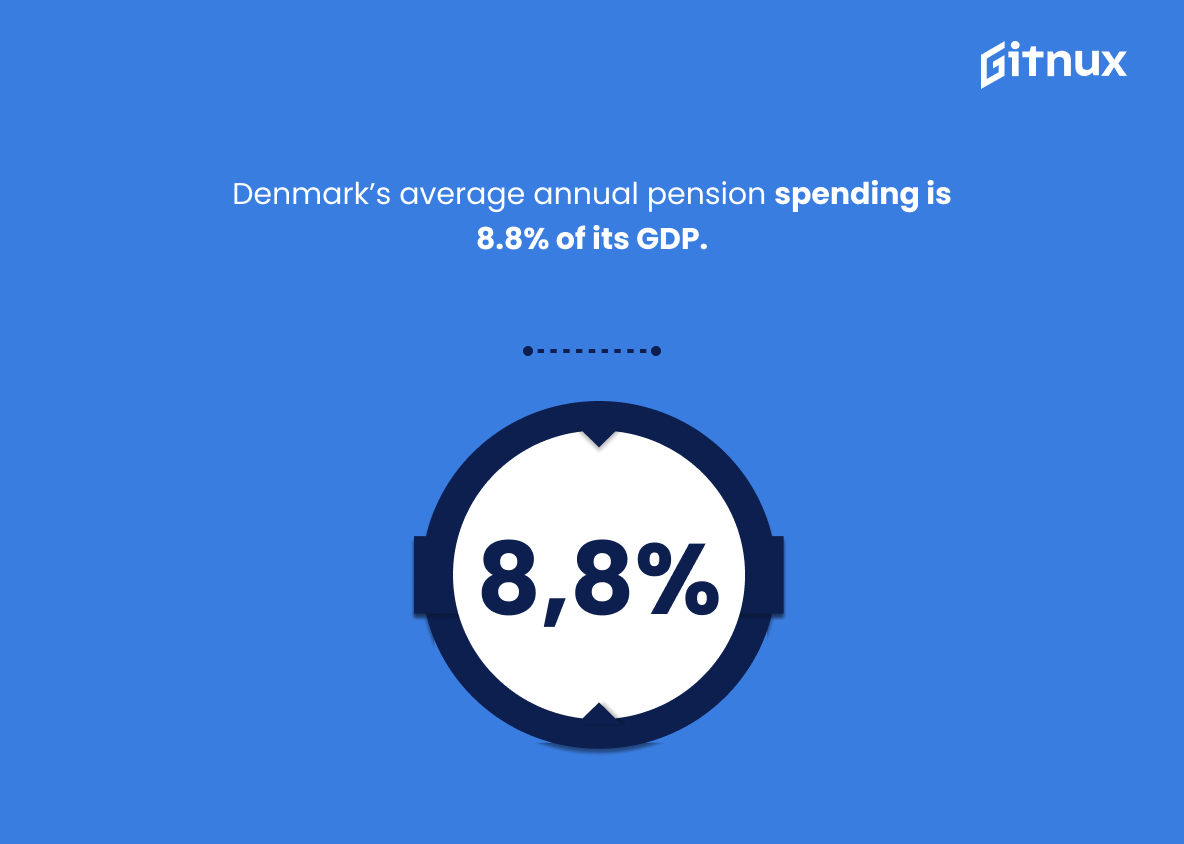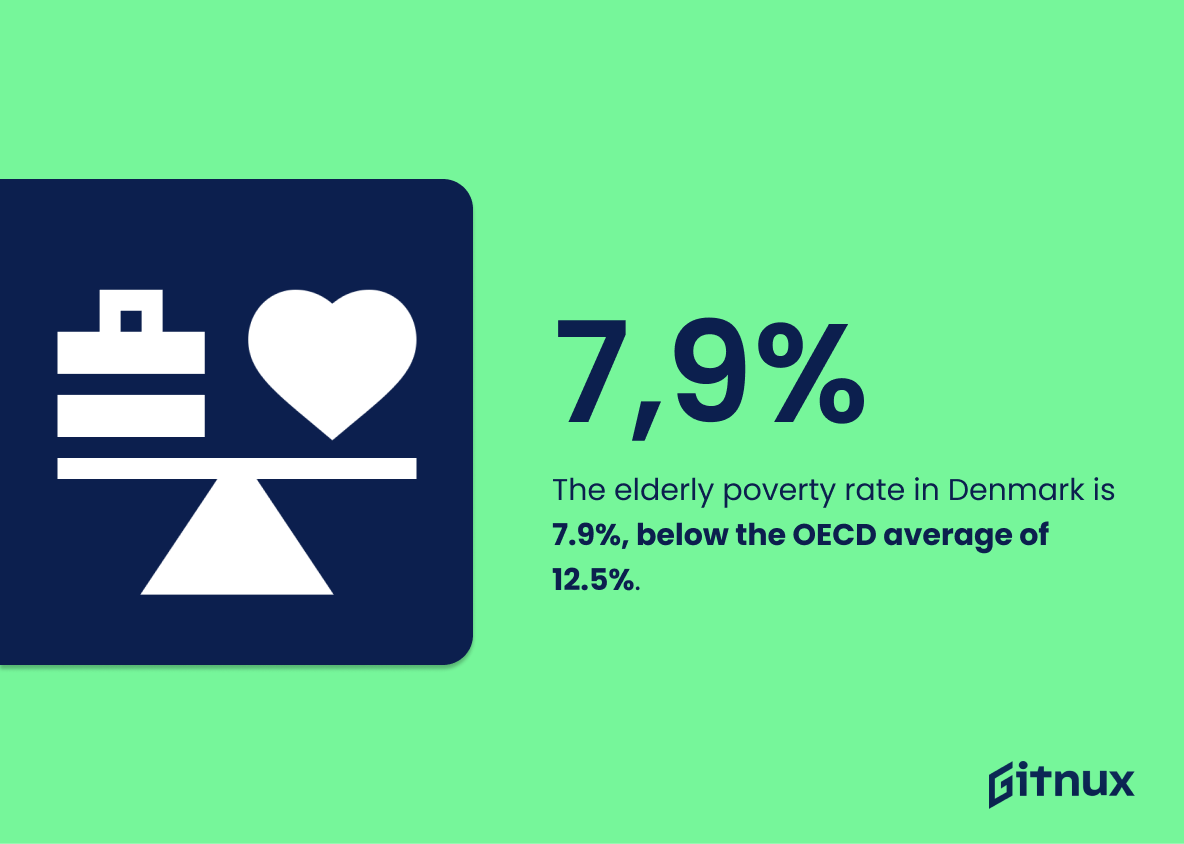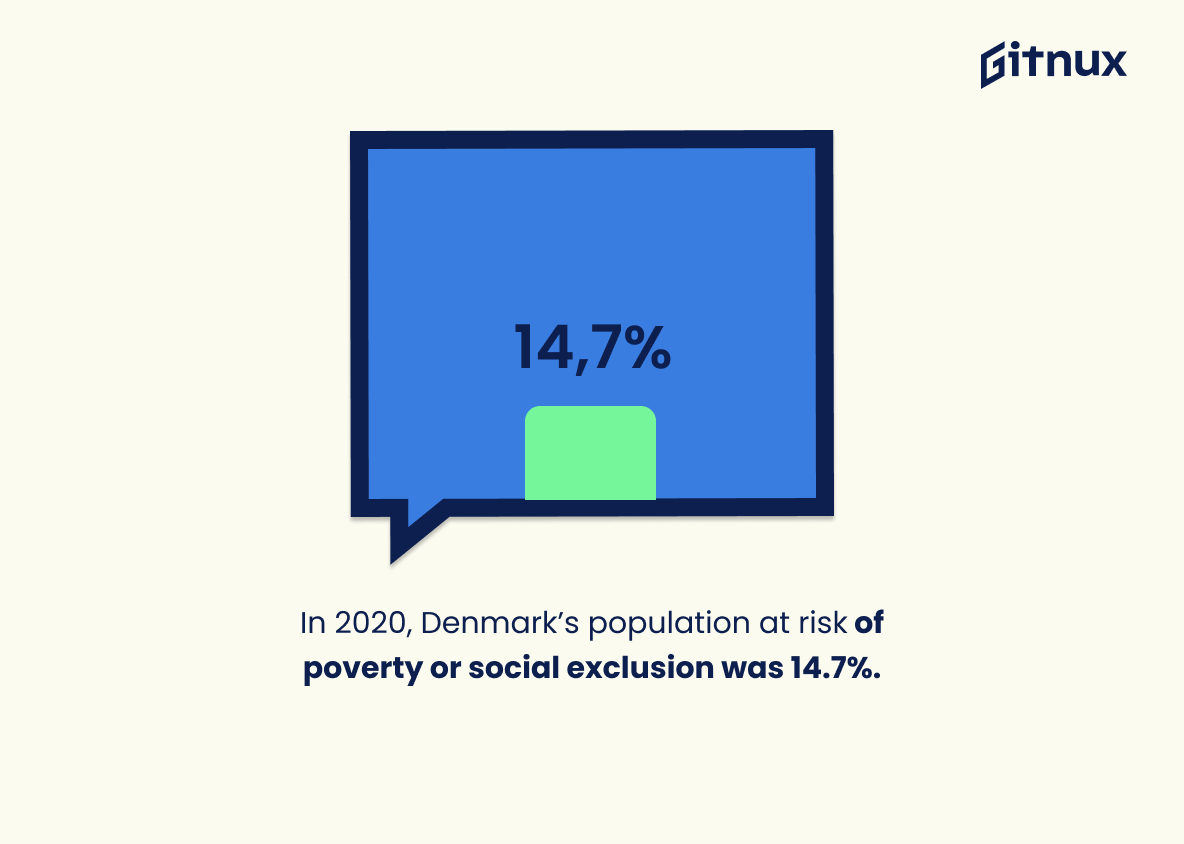Denmark is a country with an impressive welfare system and high levels of social protection. This blog post will explore the statistics that demonstrate Denmark’s commitment to providing its citizens with quality healthcare, education, family benefits, and other services. We’ll look at data from sources such as the OECD, World Happiness Report 2021, EU Multidimensional Poverty Index (EU-MIP), UNESCO Institute for Statistics (UIS), Eurostat and KidsRights Index 2020. From these figures we can see how Denmark ranks in terms of GDP spending on welfare programs compared to other countries; their poverty rate; income equality; public spending on education; unemployment rate; replacement rates for unemployment benefits; social mobility index score; duration of maternity leave offered by employers or government agencies ; Human Development Index ranking ; Gini coefficient indicating level of income inequality among households within a nation ; average annual pension expenditure relative to GDP size ; elderly poverty rate compared to OECD average , public long term care expenditures for seniors & free university tuition fees . Finally we’ll also take a look at net adjusted disposable incomes per adult citizen in 2019 according to the Better Life Index compiled by The Organisation For Economic Co-operation And Development (OECD).
The statistic of Denmark’s welfare and social protection expenditures being 26.6% of GDP in 2020 is a telling indication of the country’s commitment to providing its citizens with a strong social safety net. This figure speaks to the government’s dedication to ensuring that its citizens have access to the resources they need to live a comfortable life. It also serves as a reminder of the importance of investing in social welfare programs, which can have a positive impact on the overall well-being of a nation.
Denmark ranked 14th out of 156 countries in the 2021 World Happiness Report.
The 2021 World Happiness Report ranking of Denmark at 14th out of 156 countries is a testament to the country’s commitment to providing its citizens with a high quality of life. This is evidenced by the fact that Denmark has consistently ranked highly in the report, indicating that the country’s welfare system is effective in promoting the happiness and wellbeing of its citizens. This is an important statistic to consider when discussing Denmark’s welfare statistics, as it provides a tangible measure of the success of the country’s welfare policies.
Denmark Welfare Statistics Overview
Denmark has the 2nd highest income equality among the 36 OECD countries.
The fact that Denmark has the 2nd highest income equality among the 36 OECD countries is a testament to the success of the Danish welfare system. It is a clear indication that the country is doing something right when it comes to providing economic security and opportunity to its citizens. This statistic is a powerful reminder of the importance of investing in social welfare programs and the positive impact they can have on a nation’s overall economic health.
In 2021, Denmark had a poverty rate of 6.3% based on the EU’s Multidimensional Poverty Index.
The statistic that Denmark had a poverty rate of 6.3% in 2021 is a testament to the success of the country’s welfare system. This low poverty rate is a reflection of the effectiveness of the government’s policies in providing economic security to its citizens. It is also a sign of the country’s commitment to reducing inequality and providing a better quality of life for all its citizens. This statistic is an important indicator of the success of Denmark’s welfare system and should be included in any blog post about Denmark’s welfare statistics.
Universal, free healthcare is provided to all Danish residents.
The fact that universal, free healthcare is provided to all Danish residents is a testament to the country’s commitment to providing its citizens with a high quality of life. This statistic is indicative of the overall welfare system in Denmark, which is designed to ensure that all citizens have access to the necessary resources to lead healthy and productive lives. This statistic is a powerful reminder of the importance of providing citizens with the necessary support to ensure their well-being.
Denmark spent 1.97% of its GDP on family benefits in 2019.
The statistic of Denmark spending 1.97% of its GDP on family benefits in 2019 is indicative of the country’s commitment to providing for its citizens. It speaks to the nation’s dedication to ensuring that families have the resources they need to thrive and prosper. This is a testament to the Danish government’s commitment to providing a strong social safety net for its citizens.
Denmark’s unemployment rate was 5.1% in October 2021, below the EU average.
The fact that Denmark’s unemployment rate is below the EU average in October 2021 is a testament to the success of the country’s welfare system. It shows that the policies implemented by the Danish government are effective in providing employment opportunities for its citizens, and that the country is doing well in terms of economic stability. This is an important statistic to consider when discussing Denmark’s welfare statistics, as it demonstrates the positive impact of the country’s welfare system.
Denmark has one of the highest replacement rates for unemployment benefits at 80% for an average worker.
The fact that Denmark has one of the highest replacement rates for unemployment benefits at 80% for an average worker speaks volumes about the country’s commitment to providing economic security for its citizens. This statistic is indicative of the country’s dedication to ensuring that its citizens are able to maintain a decent standard of living even in times of economic hardship. It is a testament to the effectiveness of Denmark’s welfare system and its ability to provide a safety net for its citizens.
Denmark ranks 6th in the Global Social Mobility Index 2020.
The Global Social Mobility Index 2020 has placed Denmark in the enviable position of 6th, indicating that the country is doing an exemplary job of providing social mobility opportunities to its citizens. This is a testament to the success of Denmark’s welfare system, which has enabled its citizens to access the resources they need to move up the social ladder.
The average duration of maternity leave in Denmark is 18 weeks.
This statistic is a testament to Denmark’s commitment to providing its citizens with a generous maternity leave policy. It highlights the country’s dedication to ensuring that new mothers have the time and resources to properly care for their newborns. This is an important part of the overall welfare system in Denmark, and it speaks to the country’s commitment to providing its citizens with a high quality of life.
Denmark ranks 10th in the Human Development Index (HDI) for 2020.
The fact that Denmark ranks 10th in the Human Development Index (HDI) for 2020 is a testament to the country’s commitment to providing its citizens with a high quality of life. This ranking is a reflection of the country’s impressive welfare system, which provides its citizens with access to healthcare, education, and other social services. This statistic is a clear indication that Denmark is a leader in providing its citizens with a high standard of living, and is a great example of how a country can prioritize the welfare of its citizens.
In 2021, Denmark’s Gini coefficient was 26.7, indicating a high level of income equality.
The Gini coefficient of 26.7 in 2021 paints a picture of Denmark as a country with a high level of income equality. This statistic is significant in the context of Denmark’s welfare statistics, as it demonstrates that the nation is committed to providing its citizens with a fair and equitable standard of living. This is a testament to the effectiveness of Denmark’s welfare system, and serves as a reminder of the importance of social welfare in creating a more equitable society.
Denmark’s average annual pension spending is 8.8% of its GDP.
The fact that Denmark’s average annual pension spending is 8.8% of its GDP is indicative of the country’s commitment to providing a secure retirement for its citizens. This is a testament to the strength of the Danish welfare system, which is designed to ensure that all citizens have access to a comfortable retirement. This statistic is a powerful reminder of the importance of investing in social welfare programs, and it serves as a reminder of the importance of providing for the elderly in any society.
The elderly poverty rate in Denmark is 7.9%, below the OECD average of 12.5%.
This statistic is a testament to Denmark’s commitment to providing a high quality of life for its elderly citizens. It demonstrates that Denmark is succeeding in its efforts to reduce poverty among its elderly population, and is doing so at a rate that is significantly lower than the OECD average. This is a powerful indicator of the success of Denmark’s welfare system, and a testament to the country’s commitment to providing a secure and comfortable life for its elderly citizens.
Denmark offers free university education to its citizens and students from the European Union.
The fact that Denmark offers free university education to its citizens and students from the European Union speaks volumes about the country’s commitment to providing educational opportunities to its people. This speaks to the overall welfare of the nation, as it demonstrates that Denmark is willing to invest in its citizens and their future. This is a key factor in the success of any nation, and it is a statistic that should not be overlooked when discussing Denmark’s welfare statistics.
In 2020, Denmark’s population at risk of poverty or social exclusion was 14.7%.
This statistic is a telling indication of the success of Denmark’s welfare system. It shows that the country has been able to provide a safety net for its citizens, ensuring that a relatively small percentage of the population is at risk of poverty or social exclusion. This is a testament to the effectiveness of Denmark’s welfare policies and serves as a reminder of the importance of providing adequate social support.
The net adjusted disposable income for a Danish adult was USD 32,745 in 2019.
The net adjusted disposable income for a Danish adult in 2019 paints a vivid picture of the country’s welfare system. It shows that the average adult in Denmark is able to enjoy a comfortable lifestyle, with access to a wide range of resources and services. This statistic is a testament to the success of Denmark’s welfare system, and provides a valuable insight into the quality of life enjoyed by its citizens.
Conclusion
Denmark is a country that has made significant investments in its welfare and social protection system, which have resulted in high levels of happiness, income equality, poverty reduction and access to education. The government provides universal free healthcare for all citizens as well as generous family benefits and unemployment insurance. It also offers free university education to both Danish citizens and students from the European Union. These policies have enabled Denmark to achieve one of the highest Human Development Index scores among OECD countries while maintaining low elderly poverty rates. Furthermore, it ranks highly on global indices such as the World Happiness Report 2021 and Global Social Mobility Index 2020 due to its commitment towards providing equal opportunities for everyone regardless of their background or circumstances. Overall, these statistics demonstrate how Denmark’s strong welfare state has helped create an equitable society with improved quality of life for all residents.
References
0. – https://www.studyindenmark.dk
1. – https://www.stats.oecd.org
2. – https://www.www.oecdbetterlifeindex.org
3. – https://www.www.eurofound.europa.eu
4. – https://www.www.oecd.org
5. – https://www.worldhappiness.report
6. – https://www.ec.europa.eu
7. – https://www.hdr.undp.org
8. – https://www.data.oecd.org
9. – https://www.www.weforum.org
10. – https://www.data.worldbank.org
11. – https://www.www.lifeindenmark.dk
